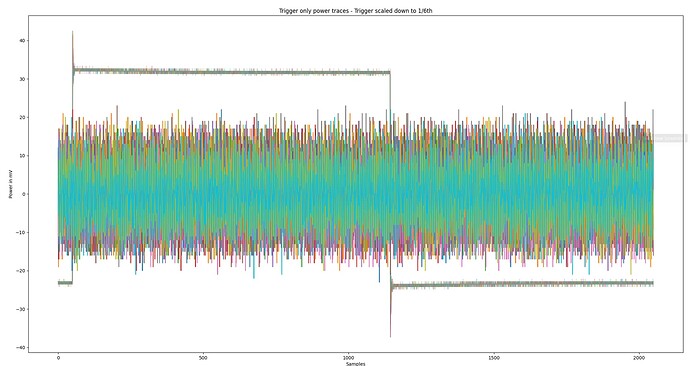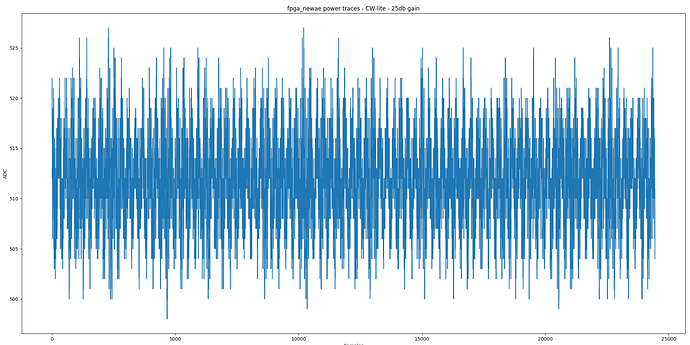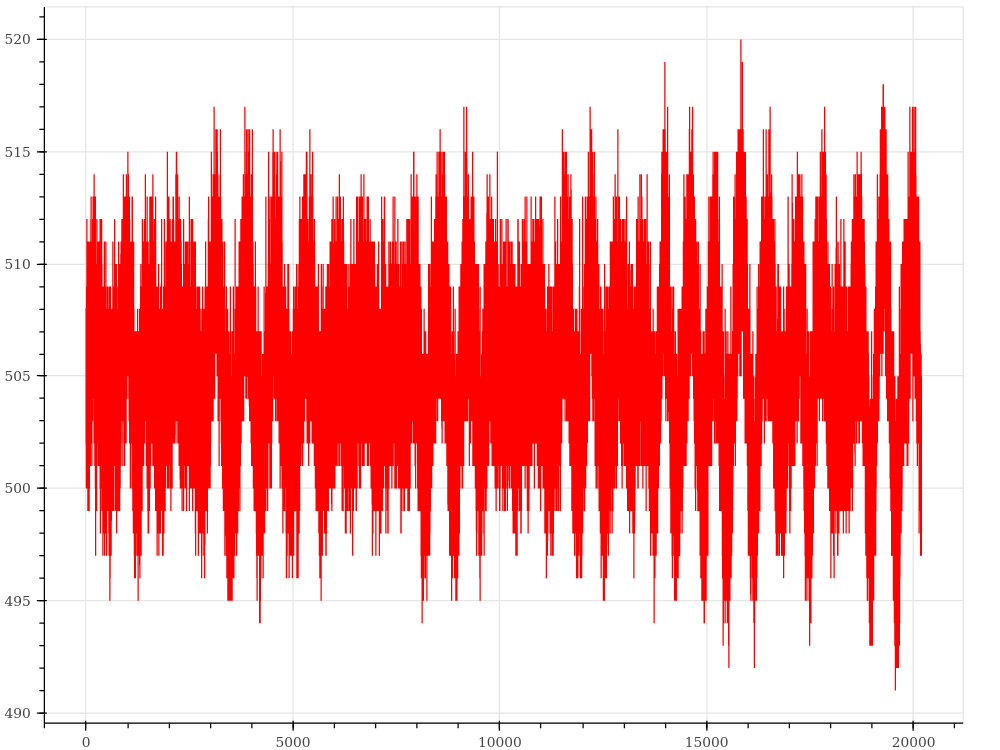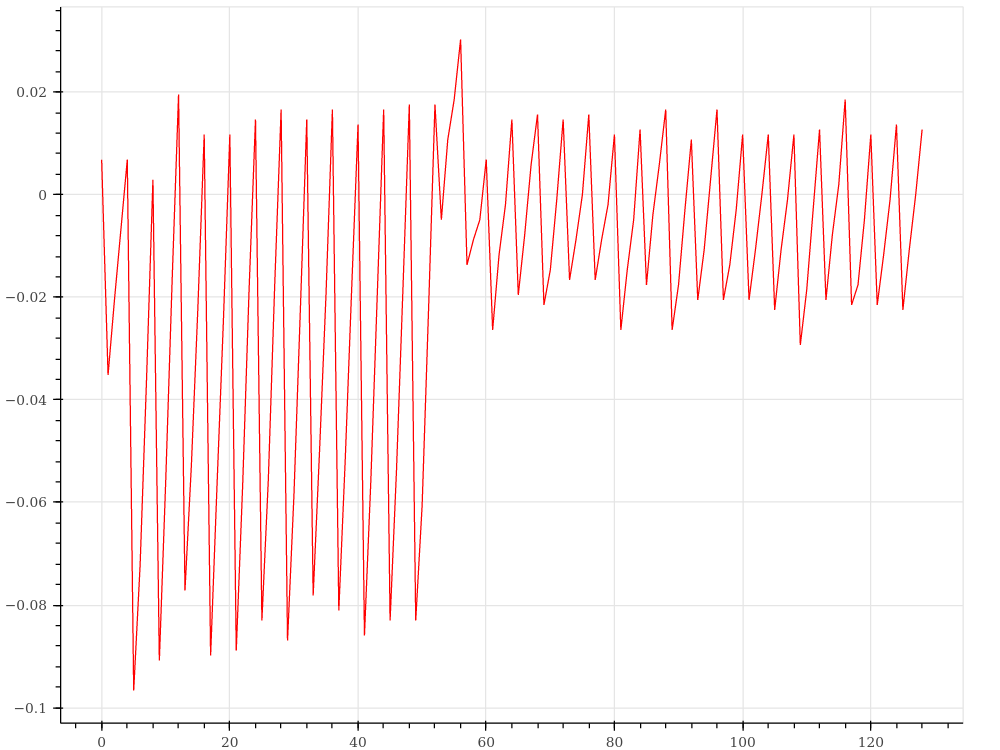Hi,
We recently noticed that we were getting fairly low SNR for CW305 measurements. As an experiment, we programmed the FPGA on the CW305 with only a counter instantiated to measure the background noise. We are surprised with the result:
Here we measured 10 power measurements of a counter on the FPGA with a 6000 series PicoScope. The background square signal is the trigger. The power probe is a 10X probe measuring with 100mV/div and AC coupling.
The background noise seems really high (+/- 20mV). We are unsure what could be causing this and if anyone else can replicate it, or if this is expected. Please let me know if you need any additional info/experiments to help debug this!
Here is our verilog HDL for reference:
module cw305_top #(
parameter DELAY = 1000
)(
// USB Interface
input wire usb_clk, // Clock
inout wire [7:0] usb_data, // Data for write/read
input wire [pADDR_WIDTH-1:0] usb_addr, // Address
input wire usb_rdn, // !RD, low when addr valid for read
input wire usb_wrn, // !WR, low when data+addr valid for write
input wire usb_cen, // !CE, active low chip enable
input wire usb_trigger, // High when trigger requested
// Buttons/LEDs on Board
input wire j16_sel, // DIP switch J16
input wire k16_sel, // DIP switch K16
input wire k15_sel, // DIP switch K15
input wire l14_sel, // DIP Switch L14
input wire pushbutton, // Pushbutton SW4, connected to R1, used here as reset
output wire led1, // red LED
output wire led2, // green LED
output wire led3, // blue LED
// PLL
input wire pll_clk1, //PLL Clock Channel #1
//input wire pll_clk2, //PLL Clock Channel #2 (unused in this example)
// 20-Pin Connector Stuff
output wire tio_trigger,
output wire tio_clkout,
input wire tio_clkin
);
wire resetn = pushbutton;
wire reset = !resetn;
reg[32-1:0] delay_counter;
reg trigger_status;
always @(posedge pll_clk1) begin
if (reset) begin
delay_counter <= 0;
trigger_status <= 1;
end else begin
if (delay_counter > DELAY) begin
delay_counter <= 0;
trigger_status <= !trigger_status;
end else begin
delay_counter <= delay_counter +1;
end
end
end
assign tio_trigger = trigger_status;
endmodule



